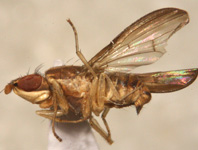Abstract
Recently, a new species of Diptera was described without preserving a type specimen (Evenhuis & Masrshall 2015). This publication caused controversy among taxonomists, of which many urged to restrict image-based descriptions to exceptional cases and insisted on the need to preserve specimens for future reproducibility of observations (Ceríaco et al. 2016; Krell 2016). I agree that type material is important in taxonomy for studying features that could not be captured on images. However, in the modern digital era, the need for actual specimen to study morphology can be circumvented.
References
Ceríaco, L.M., Gutierrez, E.E. & Dubois, A. (2016) Photography-based taxonomy is inadequate, unnecessary, and potentially harmful for biological sciences. Zootaxa, 4196 (3), 435–445.
https://doi.org/10.11646/zootaxa.4196.3.9Evenhuis, N. & Marshall, S. (2015) New species without dead bodies: a case for photo-based descriptions, illustrated by a striking New species of Marleyimyia Hesse (Diptera, Bombyliidae) from South Africa. Zookeys, 525, 117–127.
https://doi.org/10.3897/zookeys.525.6143Krell, F. (2016) Taxonomy: preserve specimens for reproducibility. Nature, 539 (7628), 168.
https://doi.org/10.1038/539168b

